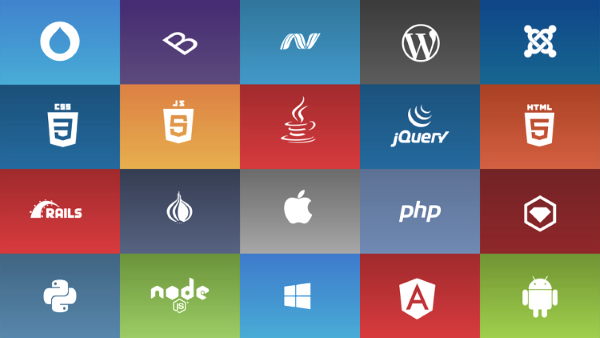The field of programming has experienced extreme changes, thanks to web frameworks. The most popular web frameworks have enabled the developers to make amazing product development. This implies that the frameworks have become a vital element in web development.
Understanding web frameworks, Architecture, the most popular web frameworks, Features of a framework, Framework tutorials are some of the discussions we are going to handle in this article.

In simple terms, a python web application framework is a software that enables developers to create a web app swiftly without having to waste time coming up with a code from scratch. It also helps developers to run a web application without experiencing difficulties.
Forms of Web Frameworks
The frameworks have two main functions; to work on the frontend (Client’s side) or to work on the backend (the server’s side) depending on their type. The main focus of the frontend frameworks is on the external part of a web app, meaning it is the first thing the clients see the moment they open the application. On the other hand, backend frameworks focus on the inside stuff. Some of the top backend frameworks alongside the languages they use include the following:
- js, Backbone + Marionette, Angular, and Ember.js
I have put together the four types of backend frameworks because all of them use JavaScript as their language for coding.
There is another web framework known as Meteor. This framework uses JavaScript in coding, but the difference from others is that it operates on both backend and frontend sides effectively. Also, the framework can use one code on both sides since both sides use the same language. For these reasons, the meteor framework has stood out to be popular and the most preferred web framework by many developers.
Frontend (the client’s side) web frameworks include the following:
- Zend- uses PHP, Ruby on Rails- uses Ruby, Django- uses Python, and Express.js which uses JavaScript
The main focus of frontend frameworks is on the inside of the browser. This means that developers can customize and change the user interface. With frontend frameworks, developers can create single-page applications and several animated features.
Features and Architecture of Web Frameworks
As much as the frameworks are distinct from one another, it makes developers have a hard time selecting the preferable framework to use. However, despite all the differences, all the frameworks have common factors that include features and architecture.
Web Framework Features
Web frameworks have common features that enable developers to operate multi functionally. Let us discuss the following common features.
- Web template system
In the process of web development, a web template system includes different methods used to form and run websites. The web templates are produced by template engines.
- Scaffolding
Scaffolding is a feature that every developer should have knowledge about and use it effectively. It is supported by some model-view-controller frameworks. This feature helps in generating the structure of the project or some sections of the app automatically, something which makes the process happen easier and faster.
- Web Caching
In webcasting, all the documents from different sections are stored to minimize overloading the server. Any developer can use this feature in any system as long as all the conditions are favorable.
- Security
There are many strategies available online on how to deal with security, including allowing or denying permission to web framework functions accessibility. The security feature also highlights the accounts using the apps to minimize the rate of clickjacking.
- Applications
Web frameworks offer support to different types of web apps. Content management system, blog creation, general-purpose websites, and forums are among the most common framework which supports app development.
- URL Mapping
URL mapping enables developers to modify the index of the website through search engines by forming an attractive name for the site. This feature also makes work more manageable, especially when you need to access the URL of your website.
The above-highlighted features are available to all frameworks. The only difference that comes in is when a developer has a wide range of functions to authenticate. This means that each developer has different needs, and they need to keep track of the process and update changes to avoid getting lost.
For this reason, it critical that as a developer, you have a laid up strategy on how to simplify your work and maintain quality. Some of the factors a developer should consider include the type of language used when coding because different frameworks use different languages.
The type of tools a framework has is another factor to consider. Some frameworks can cover all the tasks required, while others cannot. As a developer, consider a framework you understand better, and which will enable you to save more time and even costs but produce high-quality products.
Conclusion:
Do not have a fixed mind that frameworks are hard to use, maybe because of the processes involved. Simply take your time, go through several frameworks, and select the one which suits your needs and use it effectively. Technology is all about innovations and embracing new changes.